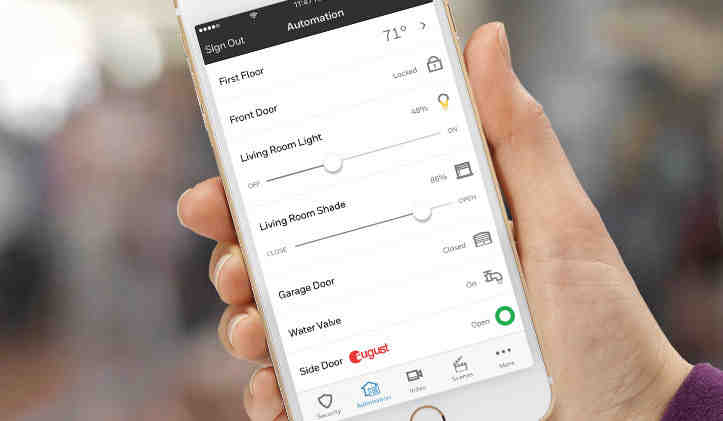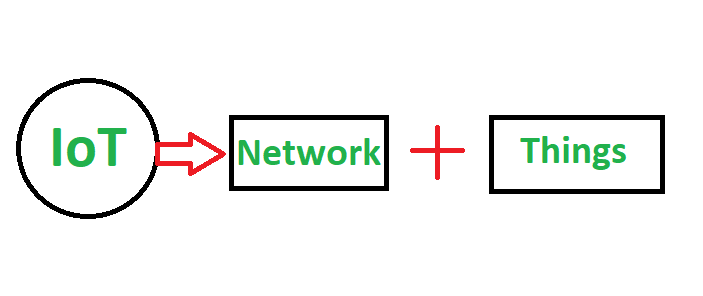What is home automation examples?
How do I make my home automation?
Contents
Whether you are looking for your first smart device, expand your collection or make your devices collaborate, here are four steps for beginners in a smart home to jump into home automation …
- Choose your first smart device. See the article : What are the disadvantages of smart homes?. …
- Choose a platform for your smart home. …
- Connect multiple devices. …
- Create routines and automation.
What are the 3 common uses of home automation? The most common applications of home automation are lighting control, HVAC, outdoor lawn irrigation, kitchen appliances and security systems.
What is home automation examples?
Practical examples of what you can do with home automation: Manage your lights: you can program multiple lighting scenarios and control sockets that are connected light sources. To see also : Which controller is used for home automation?. Thus, with the choice of script, he then adjusts the setting for the party situation, dining, reading, cinema.
What is an example of a automation?
Examples of automation include cars that use technology, cameras, and artificial intelligence to drive. Although self-driving cars are not without the risk of a collision, they can be set with a higher standard of safety than your average human driver, who will get tired and make mistakes.
What is an example of smart home automation?
Examples of hubs for smart homes include Amazon Echo, Google Home, Insteon Hub Pro, Samsung SmartThings and Wink Hub. Some smart home systems can be created from scratch, for example, using a Raspberry Pi or other prototyping board.
What is new in home automation?
Automated locks Home automation technology has an automated locking feature that ensures safety and security. In addition to demand, these locks also come with new technologies to better secure your smart homes. To see also : What are the benefits of home automation?. This technology works with the help of sensors by locking and unlocking the door.
What is the most popular home automation? Amazon Echo which is the most popular hub system provides superior home automation services. You can control the devices via Amazon Alexa or your voice. Alexa allows things to happen in one application and makes them simpler and easier.
What is next in smart home technology?
Starting next year, consumers will be able to buy smart home appliances – such as thermostats, lighting systems and kitchen appliances – that can talk to each other through a new connectivity standard called Matter.
What is the future of smart home technology?
The future of smart homes is bright, and low-power, long-range devices and cost-effective IoT devices bring us closer to this reality. The innovators who will win will give priority to interoperability not only with devices but also with different platforms.
What is the biggest market for smart home devices?
Entertainment and other controls were the biggest market for a smart home in 2020.
Which technology is best for home automation?
The X10 helps devices connect to each other primarily through power line wiring, radio frequency, and wireless protocols. Today, Zigbee, Z-Wave and Insteon are also leading protocols for home automation. These new industry standards rely more on modern wireless technology, such as network networking.
What is the future of home automation?
Home Automation is creating new home automation technologies that will make them use smart Internet technologies. These homes / homes that use home automation technologies are smart homes. This area of home automation is rapidly emerging in technology that makes homes safer and better places to live.
What is the future of smart home technology?
The future of smart homes is bright, and low-power, long-range devices and cost-effective IoT devices bring us closer to this reality. The innovators who will win will give priority to interoperability not only with devices but also with different platforms.
What is the future of home automation in India?
Almost 60% of the Indian home automation market consists of buyers in private homes (of which individual houses and cottages make up 75-80 percent of the market and builders about 20 percent of the market). This segment is growing at a high rate, with a CAGR of 35-40 percent.
What are four examples of smart devices?
Several notable types of smart devices are smartphones, smart cars, smart thermostats, smart doorbells, smart locks, smart refrigerators, phablets and tablets, smart watches, smart bracelets, smart keychains, smart glasses and many more.
What are smart devices used for? Smart devices can be combined to bring intelligence to facilities and spaces, such as smart homes and buildings, and can help automate processes and controls. They can be used in almost every industry, from smart manufacturing to healthcare, helping to improve efficiency and optimize operations.
How many smart devices are there?
Both the actual values for 2021 and the current forecast for IoT devices for 2025 are lower than previously estimated. (The previous estimate for 2021 was 12.3 billion connected IoT devices; the previous forecast for 2025 was 27.1 billion connected IoT devices).
How many smart devices are in the World 2020?
The number of Internet of Things (IoT) devices worldwide is projected to nearly triple from 8.74 billion in 2020 to more than 25.4 billion IoT devices in 2030. In 2020, the largest number of IoT devices is in China with 3 , 17 billion devices.
How many smart devices are in 2019?
In 2019 – the number of active IoT devices reached 26.66 billion. Every second – 127 new IoT devices are connected to the web. During 2020 – experts estimate the installation of 31 billion IoT devices.
What is smart automation technology?
Smart home technology, also often called home automation or home automation (from the Latin “domus” meaning home), provides homeowners with security, comfort, convenience and energy efficiency by allowing them to control smart devices, often through a smart home app on their smartphone or other networked device.
Sources :




Comments are closed.